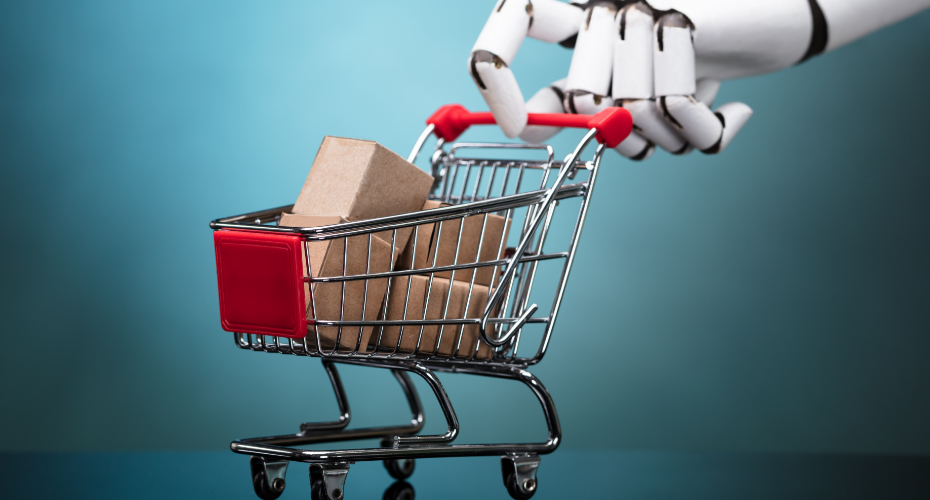
Ecommerce Past and Future: Tech Innovations and the Metaverse

The metaverse is reshaping digital commerce, enabling businesses to create more personalized, immersive, and seamless experiences for their customers. Different technologies including augmented reality (AR), virtual reality (VR), artificial intelligence (AI), and machine learning (ML) are powering the metaverse, allowing users to interact and shop in a highly customized, virtual landscape on a new, never experienced level.
Expert forecasts offer a glimpse as to how the metaverse will grow, what opportunities may abound and the economic impacts that will ripple throughout markets. By 2026, Gartner reports a quarter of us will be working, studying, shopping, and socializing in the metaverse for at least an hour a day. The metaverse technology market alone is already projected to hit $224 billion by 2030.
But before we dive into the future, it’s important to reflect on the past. Thanks to innovation and digital transformation, digital commerce has undergone a complete evolution in the last decade. The strides made by ecommerce technology will pave the way for metaverse’s success.
The Ecommerce Evolution Over the Last Decade
Many factors have contributed to the progress of ecommerce over the years, including:
- Technological advancements and innovations
Phones and mobile apps have led to increased brand awareness, easy anywhere online access to products and services thereby driving online sales.
- Rapid growth of internet users
The playing field for many has been leveled when it comes to ecommerce due to the Increased number of internet connections backed by high speed 4G data available at cheap cost. These connections have brought people and businesses closer.
- Changes in shopping behaviors
Modern consumers seek fast and connected experiences. This has rendered brick-and-mortar establishments less and less popular. This shift has sent vendors and shoppers alike straight towards their digital devices.
In addition, the covid pandemic accelerated a shift in the behavior of shoppers. With the closure of businesses and the convenience of contactless payment options, shopping experiences increasingly moved online. There was an ecommerce boom during the pandemic. According to the latest Annual Retail Trade Survey, ecommerce sales increased by $244.2 billion or 43% in 2020, over the previous year.
- Global landscape and trade
Unlike in-person shopping where consumers are limited to stores in their proximity, ecommerce knows no geographic boundaries. As long as international shipping is offered, buyers and sellers from across the globe are connected via ecommerce.
- Boom of M-commerce (Mobile sales)
Increased number of digital campaigns targeted at smartphone users have helped businesses to increase sales. Apps have also added to the convenience of mobile shopping.
- Rise of social commerce
Platforms like Instagram, Facebook, Twitter, and Pinterest serve not only as digital storefronts, but also as customer service hubs. This helps retailers connect with customers at every stage of the buyer journey and improve customer satisfaction.
- Evolution of digital wallets
Zion Market research projects the mobile wallet industry will be $750.3 billion by 2028. Widely used in online stores, these wallets offer seamless and advanced payment services, helping to reduce abandoned cart sales.
- Amazon’s growing influence
Ecommerce giant Amazon has played a huge role in transforming ecommerce. A massive array of products delivered at lightning speed has resulted in an organization valued well above $1 trillion in market capitalization. Amazon has set a new expectation for delivery and customer service.
- Enhanced product recommendations
Ecommerce websites use product recommendation engines that predict and serve customers what they are likely to purchase, helping to enhance the personalized experience.
Technological Innovations and eCommerce
Innovations have changed the entire ecommerce experience, causing the industry to rapidly evolve over the past decade. These innovations have helped to revolutionize how businesses interact with customers and vice versa, but also how humans interact with machines and devices:
- Chatbots
Automation has been a game-changer when it comes to customer engagement. Chatbots provide high levels of customer service 24/7. Businesses leverage this technology to exceed marketing objectives, increase sales and improve customer experience.
- Voice search
Voice commands are quicker than typed searches and help to enhance the overall shopping experience. Customers can quickly navigate websites, search for products more efficiently, and enjoy a hands-free shopping experience.
- Progressive Web Apps (PWAs)
PWAs help to enhance the user journey by providing a native app-like experience without the hassle of downloading or installation. These apps also use significantly less space and data, providing a seamless user journey. Users encountering better mobile experiences can easily convert to customers, leading to higher sales for businesses. It’s a win-win for entrepreneurs and consumers alike.
Impacts of Metaverse on Ecommerce
While the last several years have brought significant changes to ecommerce, the metaverse is poised to revolutionize shopping in ways we can only imagine—for now. Early makers and adopters of the technology powering the metaverse continue to unveil new products and build excitement for the virtual universe.
Hyper personalization
The metaverse will combine the best of in-person shopping and ecommerce. How? By interacting with customers within the virtual shopping malls, companies will learn more about individualized shopping and product preferences. Based on shopping behaviors, companies can use data gathered from prior customer visits to the metaverse to customize shopping experiences. Additionally, personalization leads to product recommendations or discounts to help further customize shopper experiences.
Digital immersion
Within the metaverse, consumers will be able to utilize their senses of sight and touch while shopping—from the comfort of their couch. As both are so integral to the buying process, the experience would rival the immersive feeling of being in a physical store.
Social engagement
Online shopping can be viewed as a relatively individual activity. However, the metaverse is changing this aspect by making it a more social activity as people can freely interact with one another. As immersive experiences will be the norm in the metaverse, brands can invite customers to actively participate in social activities.
Higher profits
Research indicates that AR increases shopping times and yields higher conversion rates amongst consumers. Research by Vertebrae, a company specializing in AR and 3D ecommerce, reports conversion rates for customers increases by 90% when engaging with AR versus those that don’t. The increased capabilities for product visualization can help brands achieve higher profit margins.
Customer insight
Brands will know how much merchandise to produce based on customer use and interaction in the metaverse. According to Google, 66% of individuals would like to get help from AR when shopping. In the metaverse, improved customer interactions will enable companies to get a better sense of customers, allowing them to tap into buying emotion. Overall, the customer will be happier in their experience and buying journey.
Embracing the Metaverse
Market dynamics, global connectivity, and technology have all impacted the ways retailers connect with consumers and vice versa. Changing customer expectations have been a driving force behind the transformations to ecommerce over the last several years. Retailers are chasing innovations that enable fast, seamless, and personalized experiences. Metaverse is the most recent innovation to impact the ecommerce industry. With it still emerging, we can only predict the impact of the metaverse on ecommerce, but we are excitedly anticipating the future.
Apexon personalizes engagement across commerce channels to increase revenues and improve customer satisfaction. To learn more about implementing the right digital commerce solutions for your company, check out Apexon’s Digital Commerce capabilities.




